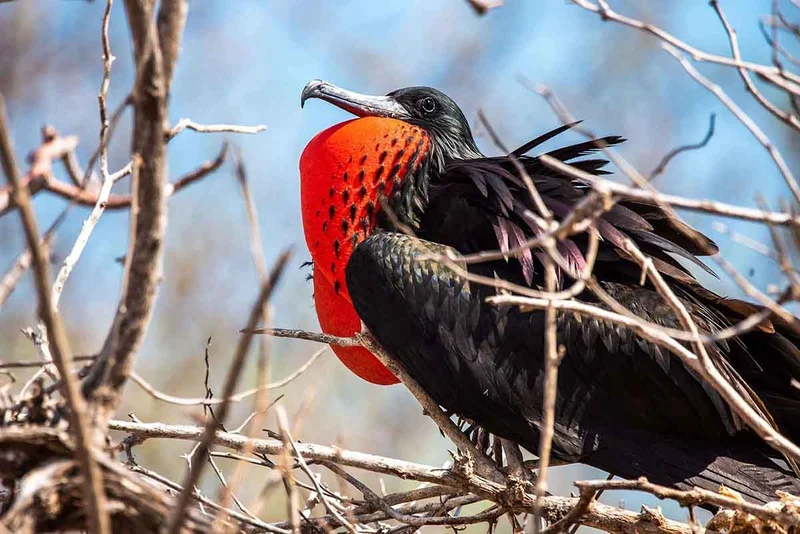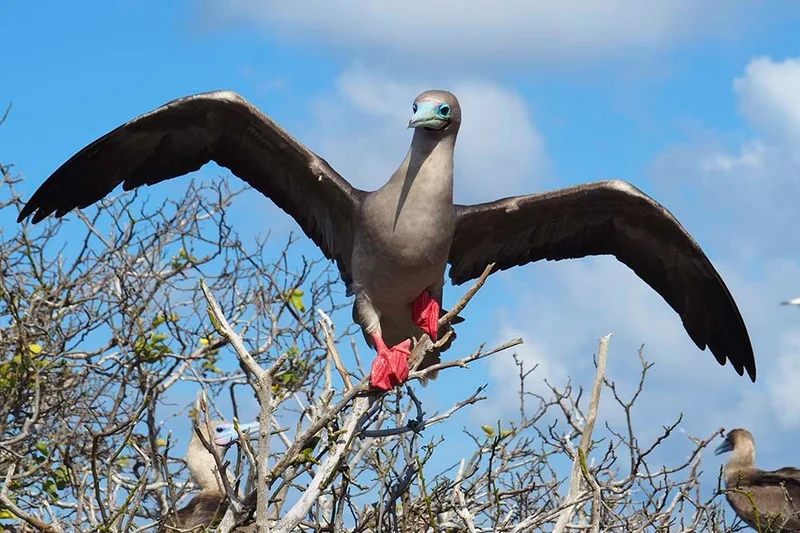
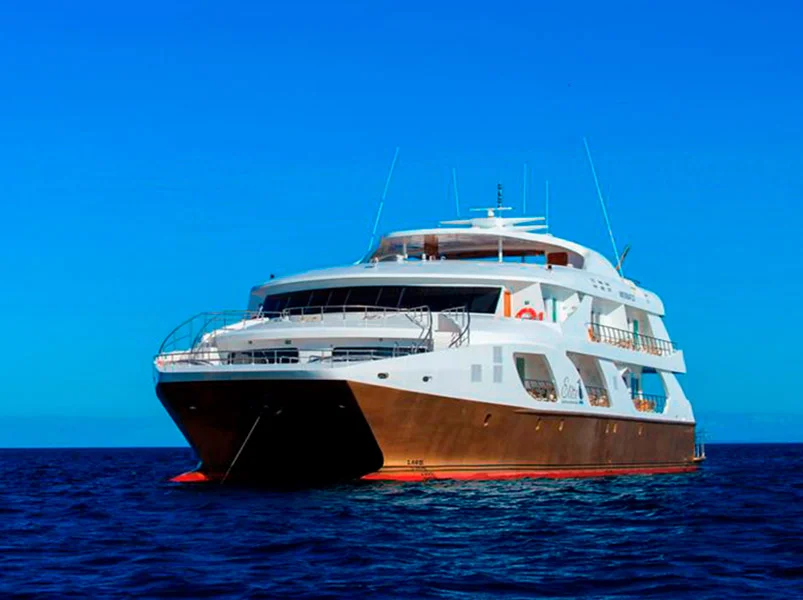
8 Day Galapagos Itinerary
Day 1: San Cristobal Island: David Rodriguez Breeding Center
David Rodriguez Breeding Center
Walking through the trails of the reserve, you can see baby tortoises being reared in semi-natural conditions - a brilliant demonstration of the commitment the local people have to preserving the wildlife that makes the Galapagos so special.
Day 2: Española Island: Gardner Bay & Suarez Point
Suarez Point
Unique to Española island are also the beautiful waved albatross, that can be seen majestically launching themselves out across the ocean from the cliffs and the red and green marine iguanas.
Gardner Bay
A short panga ride will take you to the Gardner and Osborn Islets, which are superb locations for snorkeling with young sea lions and a variety of colourful tropical fish and corals.
Day 3: Floreana Island: Cormorant Point, Devil’s Crown, Post Office Bay & Baroness Lookout
Cormorant Point / Devil’s Crown
Cormorant Point showcases two distinct beaches: one with olive-green sand rich in olivine crystals and another known as ‘Flour Beach,’ which features pristine white sand made from crushed coral.
A highlight is the saltwater pond, home to one of the largest populations of Galapagos flamingos, along with other shorebirds like stilts, white-cheeked pintails, and large-billed flycatchers.
Afterward, guests will board a zodiac for a trip to Devil’s Crown, an almost entirely submerged underwater volcanic crater. Only a small part of the rock formation is visible, resembling a crown from above. Snorkelers can explore a vibrant underwater landscape filled with coral reefs and a diverse range of marine life. This area is also a notable birdwatching spot due to its open-water location.
Post Office Bay
Long before the Galapagos Islands became a popular travel destination, they served as a stop for large wooden sailing ships, including whalers. Sailors left a barrel near a sheltered bay on Floreana Island to send and receive letters from home.
Today, yachts in the Galapagos carry on this tradition: visitors can drop off letters and postcards in the barrel, which other travelers will deliver. After browsing the letters for any intended for your area, you can relax on the small beach where passengers board and disembark from the landing craft.
The Baroness’ Lookout
In the early 1930s, Floreana Island was the home of Eloise Wehrborn de Wagner-Bosquet, a striking young Austrian woman with two lovers, who dubbed herself “the Baroness of Galapagos.” She became an international sensation but mysteriously vanished in 1934, leaving her case unsolved.
The site visit includes a brief panga ride, where you may spot rays and turtles. The shore features red mangroves vital to the island's ecosystem. Upon landing, a dusty trail leads upward to the lookout point, which is a rocky volcanic hill offering stunning views as a reward for those who make the climb. Nearby, you can find the ruins of an old biological station used in 1934 when filmmakers came to create a short film starring the Baroness.
Day 4: Mosquera Islet & Santa Cruz Island: Bachas Beach
Mosquera Islet
Mosquera, a small islet nestled between Baltra and North Seymour, is characterized by its sandy and rocky terrain, offering limited vegetation. It is a haven for sea lions and various bird species, including gulls. Visitors can also spot marine iguanas basking on the rocks and vibrant Sally Lightfoot crabs in the tidal pools. Shorebirds are often seen walking along the beach. The area is known for good snorkeling, with dive shops in Puerto Ayora offering day trips. After the morning visit, guests will prepare for departure to Baltra Airport, traveling across Santa Cruz Island's highlands. Airport staff will assist with check-in before saying farewell and boarding the flight back to mainland Ecuador.
Bachas Beach
Bachas Beach ranks among the most stunning beaches in the Galapagos, featuring a long stretch of pristine white sand where sea lions relax and crabs scurry about. The beach has historical significance, having been used by Americans during World War II; its name derives from "barges," which were once unloaded here. Sea turtles nest in the surrounding sand dunes, and guests are advised to avoid marked areas to protect the eggs. Nearby, two salt lagoons are frequented by flamingos. There's no formal hiking; instead, visitors can enjoy a leisurely stroll along the warm beach and take a refreshing dip, with some opting for easy snorkeling in the gentle waves.
Day 5: Genovesa Island: Prince Philip's Steps, El Barranco & Darwin Bay
Prince Philip's Steps, El Barranco
A panga ride or kayaking/paddle boarding along the edge of the cliffs provides a good chance to see the elusive Galapagos fur seals nestled on the rocks, and snorkeling is a great activity if you fancy a dip with a variety of shark species.
Darwin Bay
The trail culminates at a viewpoint that offers a stunning view overlooking the cliffs and the bay below.
Day 6: Santiago Island: Espumilla Beach, Buccaneer Cove & Egas Port
Espumilla Beach
This idyllic location is perfect for snorkeling or kayaking/paddle boarding amongst a raft of marine life, including species of octopus, eels and sharks.
Buccaneer Cove
A panga ride along the eroded shoreline provides views of intriguing rock formations that provide excellent ledges for boobies, pelicans and gulls.
Egas Port
A stroll along the wide trails inland leads you past tidal pools and rocky volcanic formations known as grottoes where it is possible to spot fur seals enjoying a spot of shade.
Day 7: Santa Cruz Island: Black Turtle Cove, Highlands & Charles Darwin Research Station
Black Turtle Cove
The first stop of the day is Black Turtle Cove, located on the northern shore of Santa Cruz. This area exemplifies how mangroves transform the marine environment, creating a diverse and unique habitat. Three species of mangroves line the shore, extending into a shallow lake that stretches nearly a mile inland.
As you glide through the tranquil waters in a zodiac, expect to spot spotted eagle rays and diamond-shaped mustard rays swimming in formation. White-tipped reef sharks glide beneath the boat, while Pacific green sea turtles surface for air and mating. Various waterfowl, such as pelicans, herons, and egrets, feed in the cove. It’s a serene spot where visitors frequently enjoy close encounters with Galapagos wildlife, often making it a trip highlight!
Highlands and Charles Darwin Research Station
In the highlands of Santa Cruz, you’ll have the chance to see the famous giant tortoises in their natural habitat. These iconic endemic animals are so renowned they inspired the name of the archipelago. Birdwatching is also a popular activity here, with the area home to finches and other Galapagos birds.
After exploring the highlands, the journey continues to the renowned Charles Darwin Research Station. Here, guests can learn about essential efforts to preserve the archipelago’s ecosystems.
The station also hosts an important breeding program for Galapagos tortoises, which have been declining since the 1970s.
These fascinating reptiles are accustomed to human presence, so don’t forget your camera for some great close-up shots!
Day 8: San Cristobal Island: Lobos Island
Isla Lobos, known as “Sea Lion Island,” is a narrow island located near San Cristobal Island. True to its name, it hosts a thriving population of sea lions. A trail runs through the island, offering visitors a chance to spot various bird species, including Blue-footed and Nazca Boobies. The island is also inhabited by marine iguanas and lava lizards.
Beyond the hiking trails, the tranquil waters between Lobos Island and San Cristobal provide excellent snorkeling opportunities, where visitors can enjoy close encounters with the playful sea lions.
After our morning excursion, passengers will prepare for departure and be transported to San Cristobal Airport. Our airport staff will assist with the check-in process before saying goodbye and boarding the flight back to mainland Ecuador.
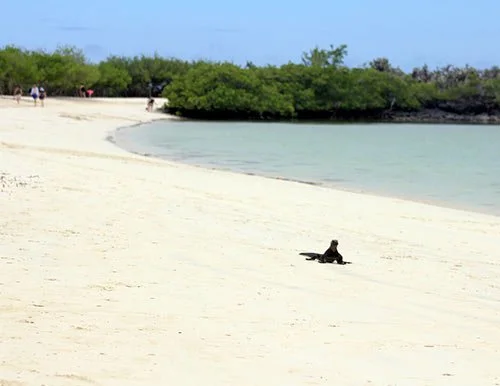
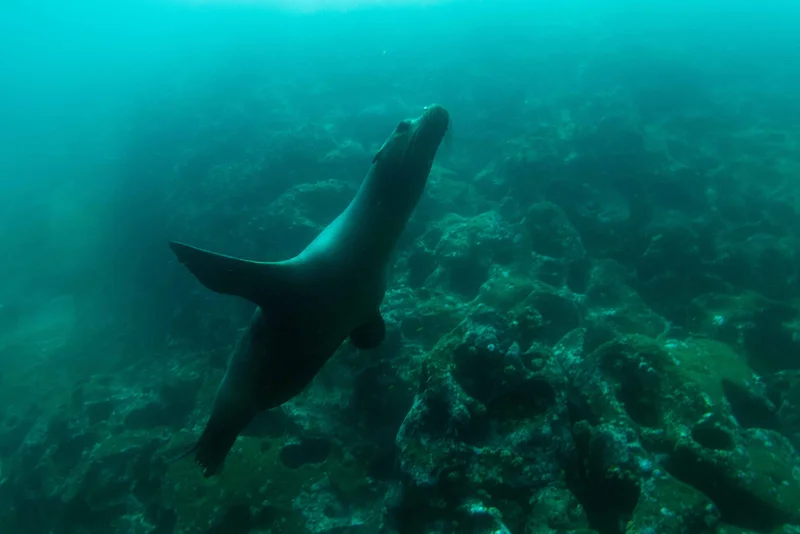
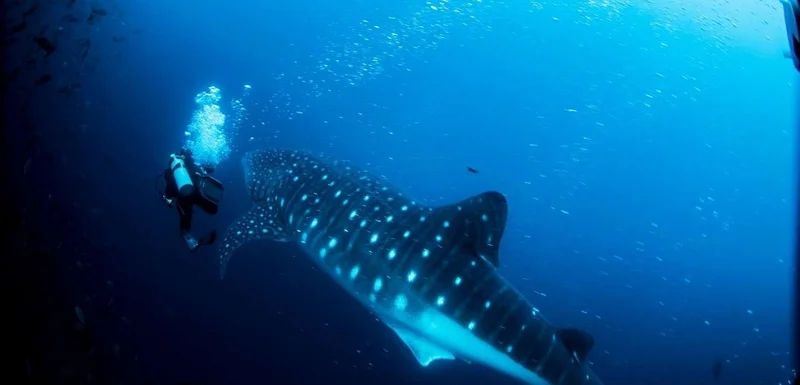
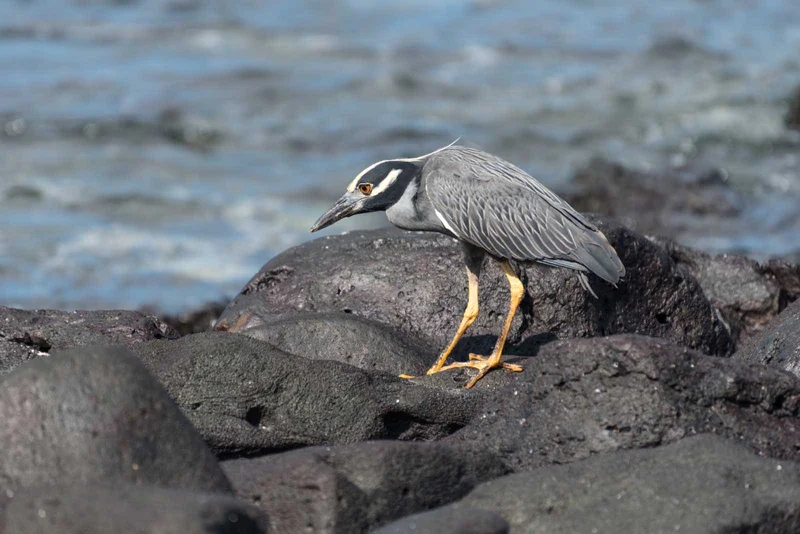
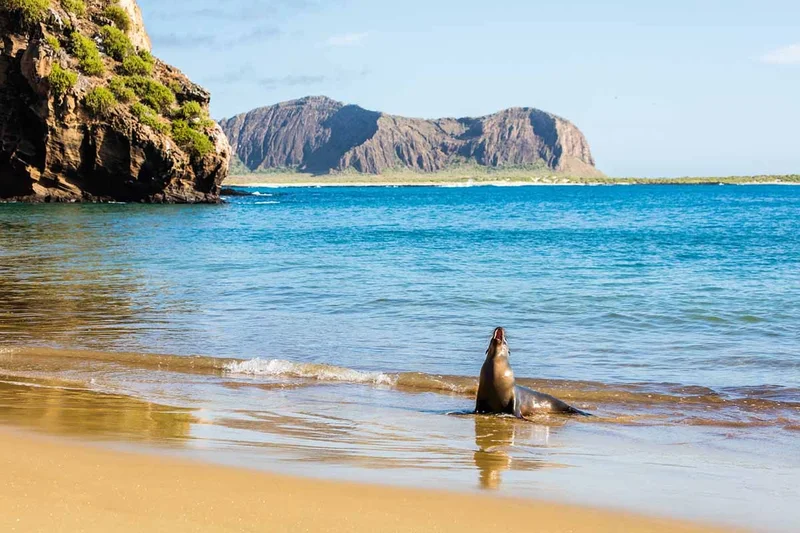
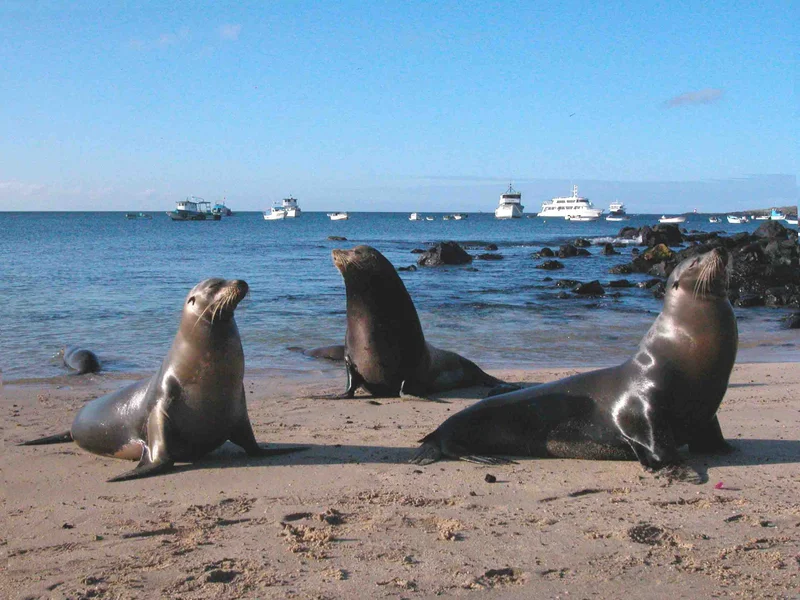
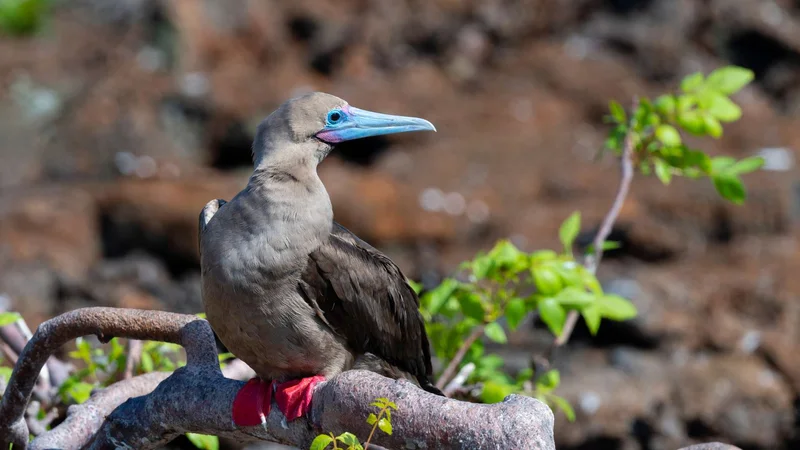
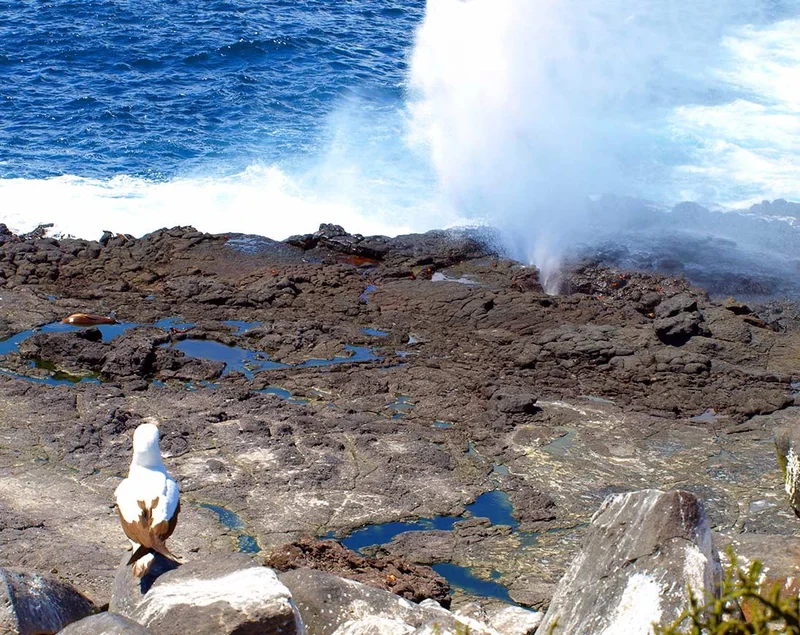
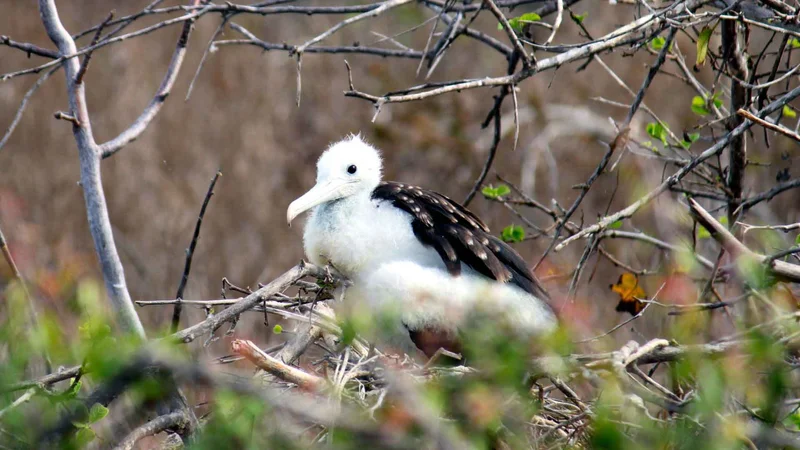
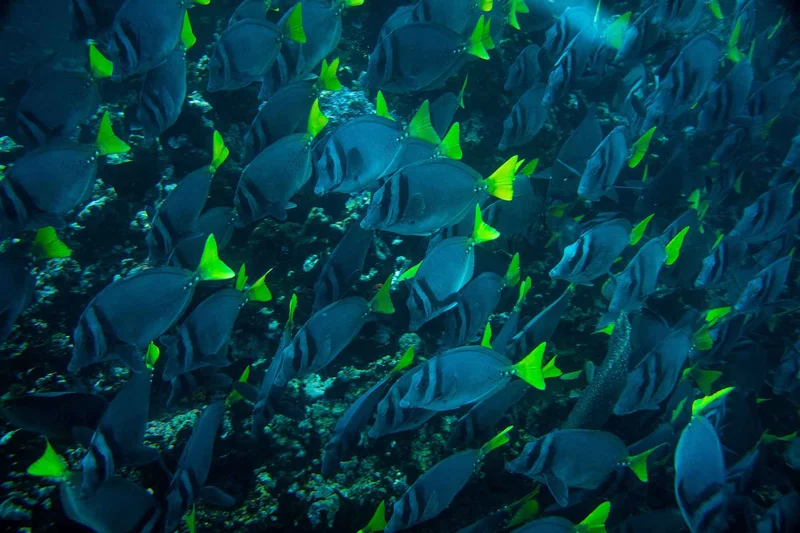
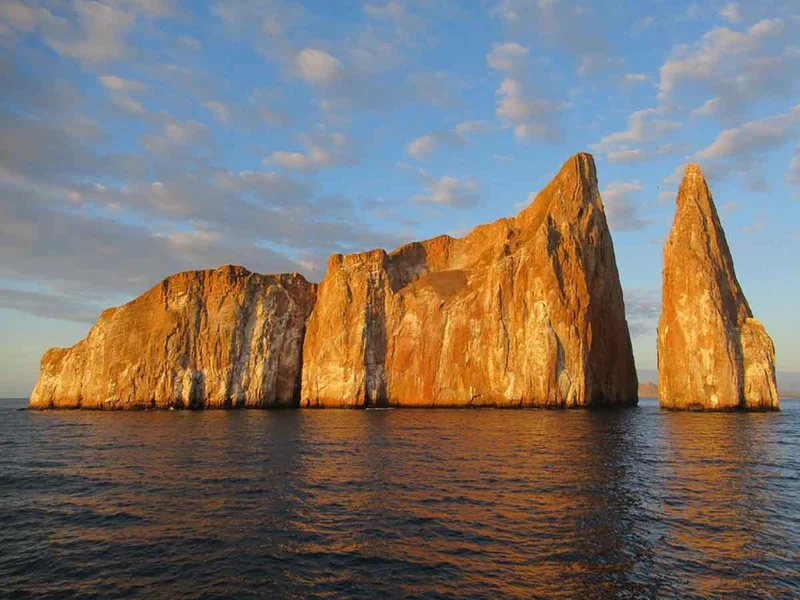
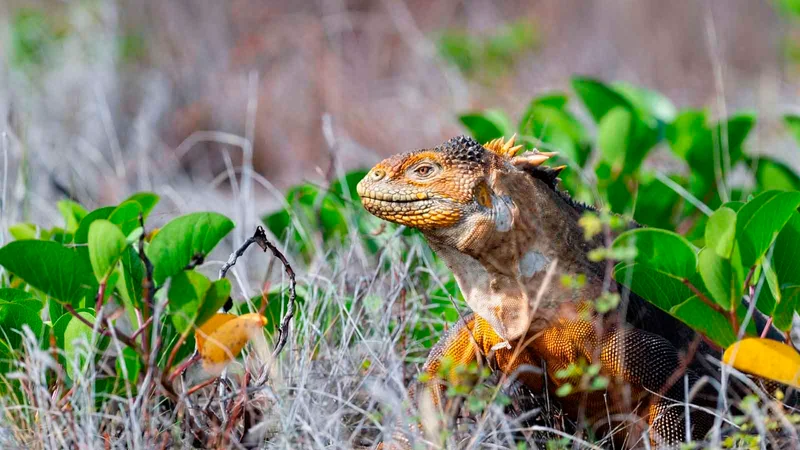
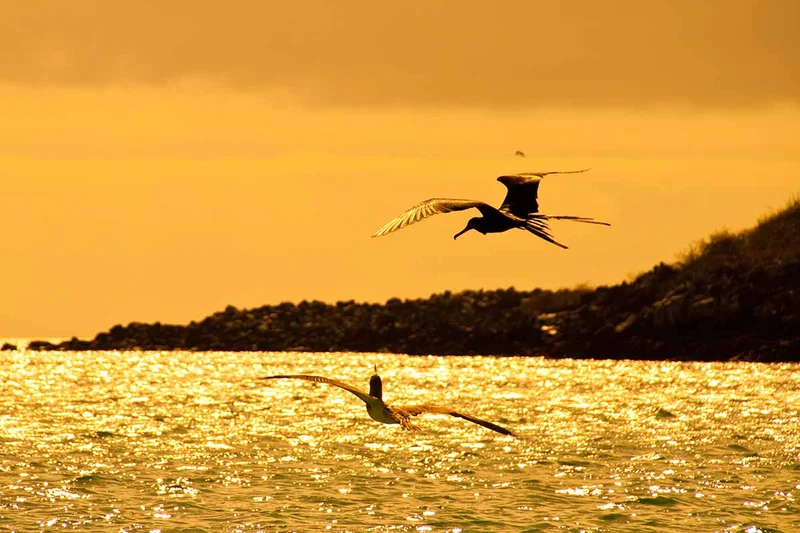
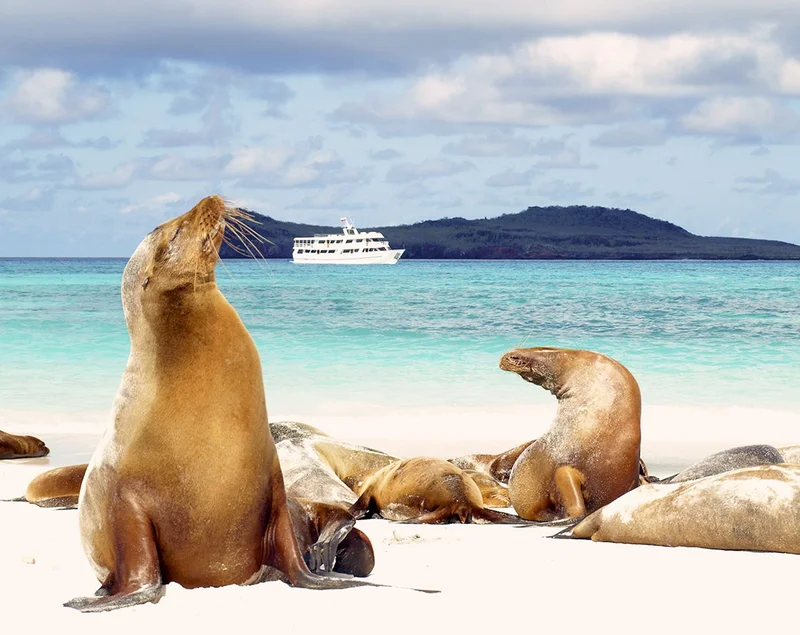
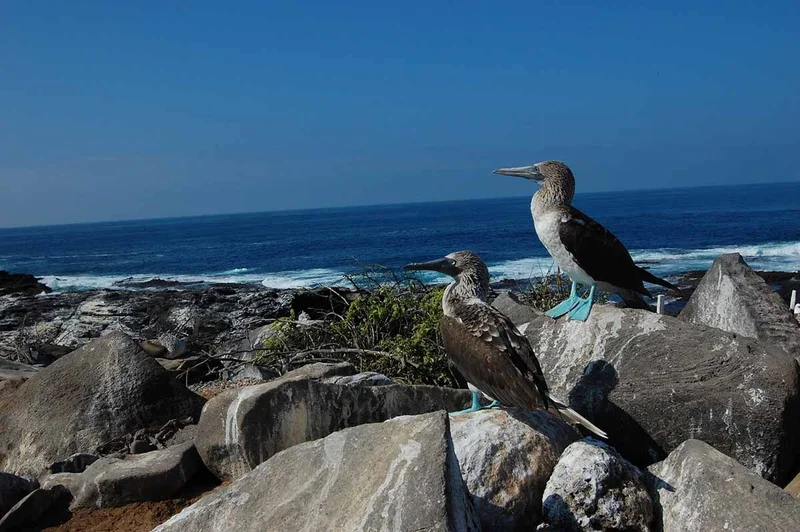
8 Day Galapagos Itinerary Includes
- Double or single accommodations
- All meals and snacks
- Programmed visits to the islands with a Certified Bilingual Naturalist Guide
- Transfers between Galapagos airport and cruise
- Snorkeling gear (masks, fins, and snorkel)
- Wetsuits
8 Day Galapagos Itinerary Does not Include
- Air ticket to/from Galapagos
- National Park Entrance fee
- Transit Control Card
- Personal Expenses and tips
- Alcoholic and Bottled Beverages
- Travel and health insurance
8 Day Galapagos Itinerary Highlights
- Visit both Española and Genovesa island on an 8 day itinerary
- Spot the 3 types of Boobies, red-footed, blue-footed and masked boobies
- Walk to the Cliff at "El Barranco" an observe the Galapagos hawk hunting for sea birds
- Snorkel with sea turtles and sea lions in the turqouise blue waters at Gardner bay
Itinerary Map
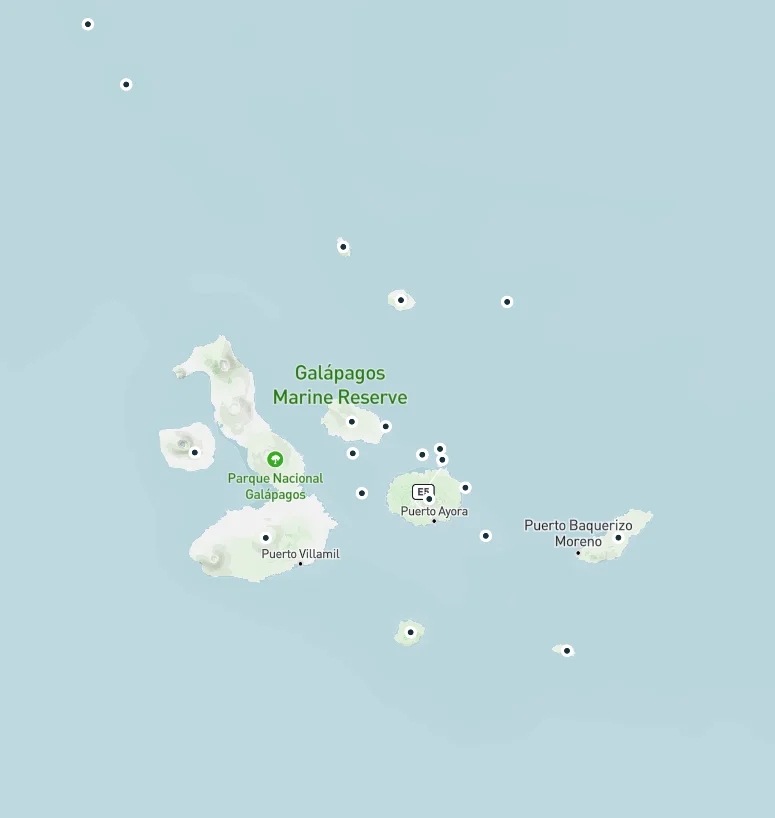
Dates & Promotions
Dates |
|---|
No data |
Reviews
Animals you might see on this itinerary:
More information about the Galapagos Islands you visit in this 8 day itinerary:
Elite Catamaran Galapagos cruise Itinerary B Southern & Central Islands 8 days
Why travel with us?
Similar Itineraries
